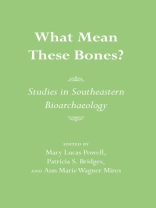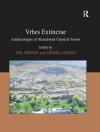A Dan Josselyn Memorial Publication Until recently, archaeological projects that included analysis of human remains had often lacked active collaboration between archaeologists and physical anthropologists from the planning stages onward. During the 1980s, a conjunctive approach developed; known as "bioarchaeology, " it draws on the methodological and theoretical strengths of the two subdisciplines to bridge a perceived communications gap and promote a more comprehensive understanding of prehistoric and historic cultures. This volume addresses questions of human adaptation in a variety of cultural contexts, with a breadth not found in studies utilizing solely biological or artifactual data. These nine case studies from eight Southeastern states cover more than 4, 000 years of human habitation, from Archaic hunter-gatherers in Louisiana and Alabama to Colonial planters and slaves in South Carolina. Several studies focus upon variations in health between or within late prehistoric agricultural societies. For example, the discovery that reliance upon maize as a dietary staple did not result invariably in poor health, as claimed by earlier studies, either for entire populations or, in ranked societies, for the non-elite majority, has fostered a new appreciation for the managerial wisdom of the Mississippian peoples, as well as for their agricultural skills.
Patricia S. Bridges & Ann Marie W. Mires
What Mean These Bones? [PDF ebook]
Studies in Southeastern Bioarchaeology
What Mean These Bones? [PDF ebook]
Studies in Southeastern Bioarchaeology
Buy this ebook and get 1 more FREE!
Language English ● Format PDF ● ISBN 9780817384715 ● Editor Patricia S. Bridges & Ann Marie W. Mires ● Publisher University of Alabama Press ● Published 2010 ● Downloadable 3 times ● Currency EUR ● ID 10025235 ● Copy protection Adobe DRM
Requires a DRM capable ebook reader












